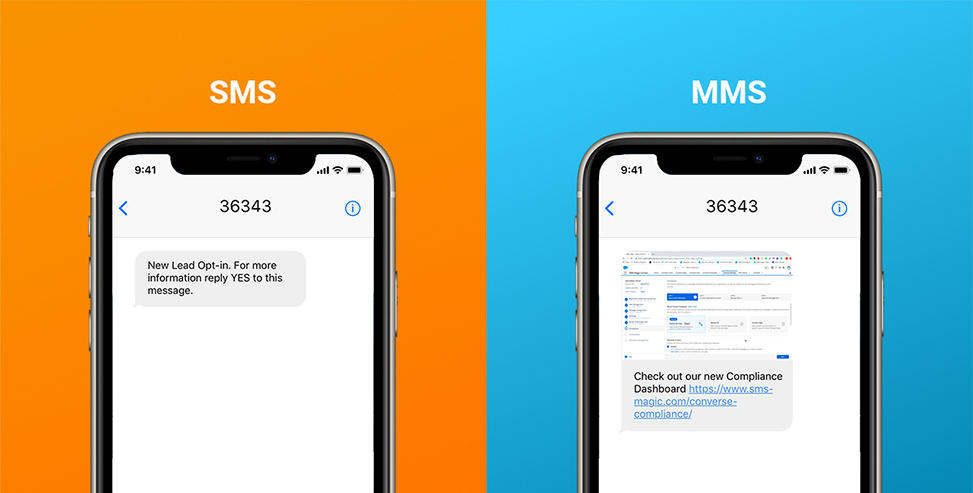
If you’re like most of our customers, you’re wondering what’s up with the alphabet soup of SMS vs MMS. Can’t tech people find an easier way to explain things?
That’s just what we wanted to do in this article. Answer that simple question, without all the acronyms.
SMS is an acronym that stands for Short Messaging Service. It’s become the defacto name for text messages that come to your phone. Technically, it refers to the text messaging service that sends text-only messages to mobile numbers. That’s a carrier thing.
If you’re interested in knowing more about using SMS in business, check out this post!
The acronym MMS stands for Multimedia Messaging Service. It refers to a text message that includes multimedia content such as pictures or video.
With MMS messages you can send:
MMS messages get your audience’s attention. Since our brains process visuals 60,000 times faster than text content, we are automatically attracted to anything visual.
Want to know more about using MMS? Check out how you can leverage the power of MMS messaging for your business.
So when do you use SMS vs MMS? SMS and MMS use the same text messaging service, they both send to mobile numbers. The obvious difference is that one can have text and multimedia and one contains strictly text.
For business messaging, there’s a difference in cost with SMS vs MMS.
For interactive conversations and some automated campaigns, you can use SMS. This includes things like scheduling, appointment reminders and follow-ups, as well as rep conversations, compliance consent messages etc. SMS messages are also great to ask questions that capture deeper and deeper profiling information, so you can deliver an even more personal touch to every buyer, candidate, student, client and more.
If you’re using messaging to attract attention, think about an MMS strategy. Since 90% of the information processed by the brain is visual, sending videos or photos will grab the attention of readers.
Some examples of powerful MMS include:
Companies can also use MMS for contests, coupons and holiday promotions.
Regardless of which messaging type you choose, you’ll enjoy the benefits of attracting more new prospects, converting more new clients and serving them better than you ever imagined possible. All with that personal touch that makes your business extra successful!
At SMS-Magic, we make sure there is no SMS vs MMS. For our customers, it’s SMS and MMS. Plus Facebook and WhatsApp. Our Omnichannel support seamlessly routes, blends and manages conversations across SMS, MMS, Facebook and WhatsApp.
We’ll be showing it off at Dreamforce. If you’re there, please come say hello and check it out! W’ll be at booth #210 showing off our Messaging Magic.
CATEGORIES: SMS/Text Marketing
TAGS: Salesforce text messaging SMS messages SMS messaging SMS vs MMS
Stay updated on business text messaging
Text MAGIC for Demo to
USA: 36343
AUS: (61)409564682
UK & ROW: +44 7860017509
Email: care@sms-magic.com
Recent Comments
Interdum luctus accu samus habitant error nostra nostrum
Lance BogrolDoloremque velit sapien labore eius lopren itna
Lance BogrolInterdum luctus accu samus habitant error nostra nostrum
Fletch SkinnerInterdum luctus accu samus habitant error nostra nostrum
Chauffina CarrDoloremque velit sapien labore eius lopren itna
Hans Down